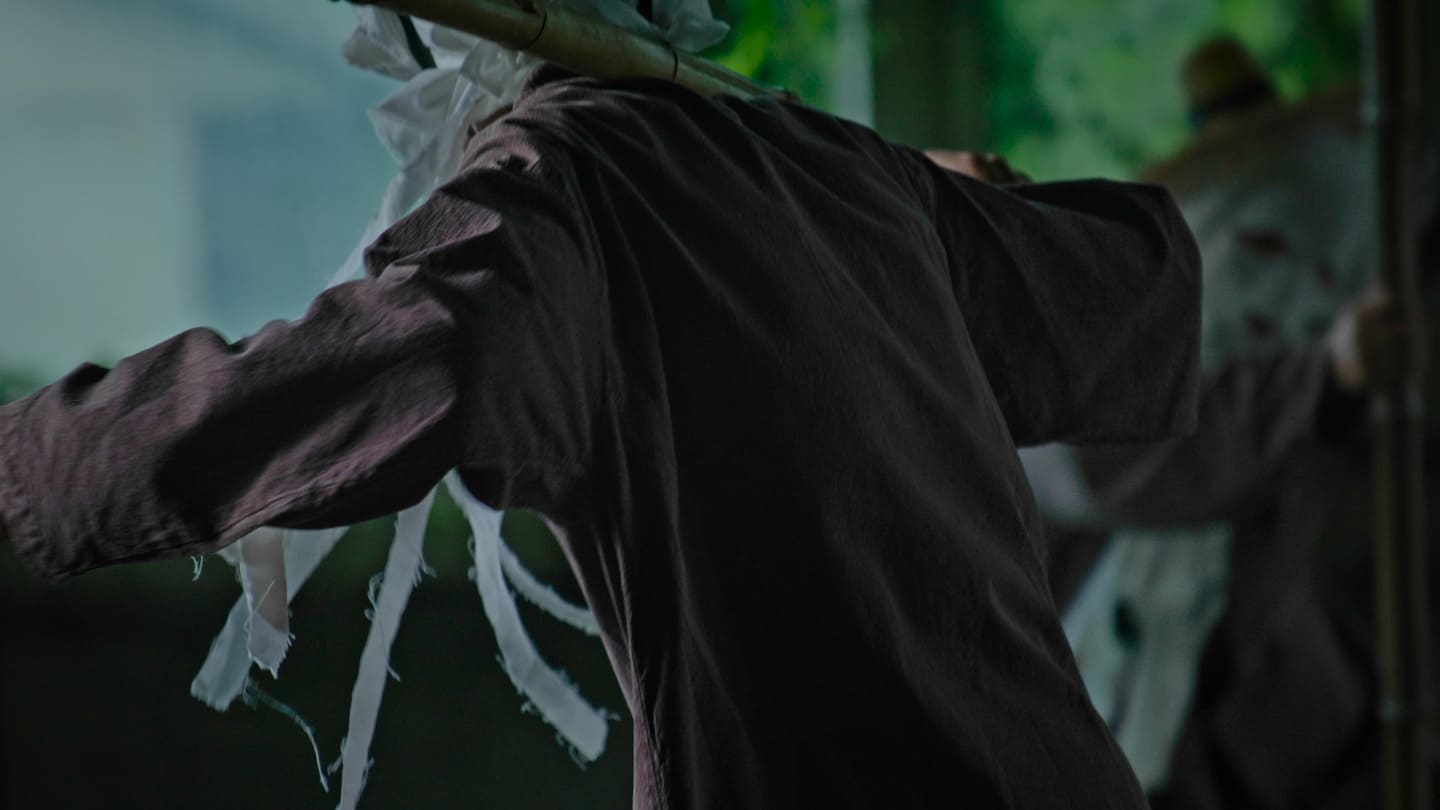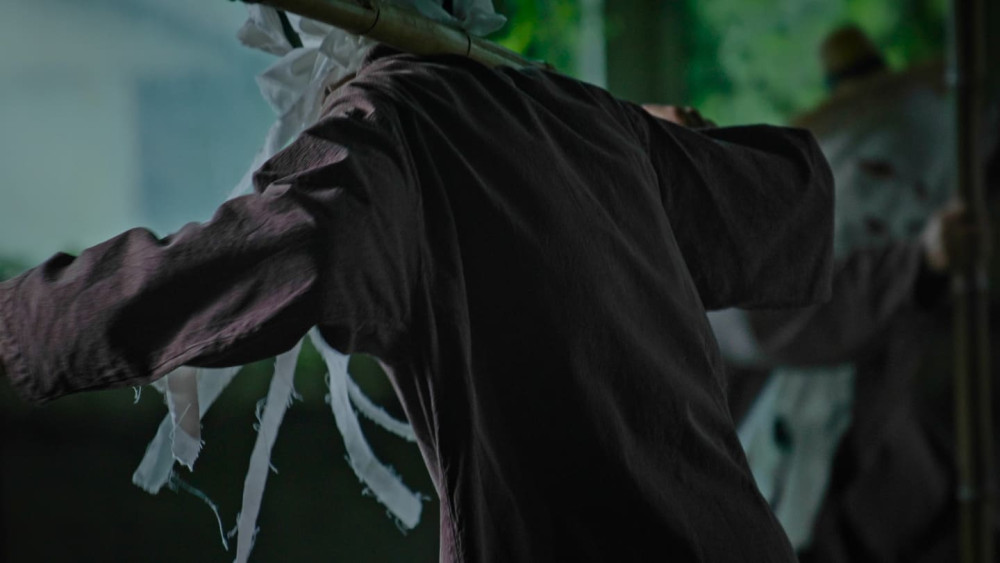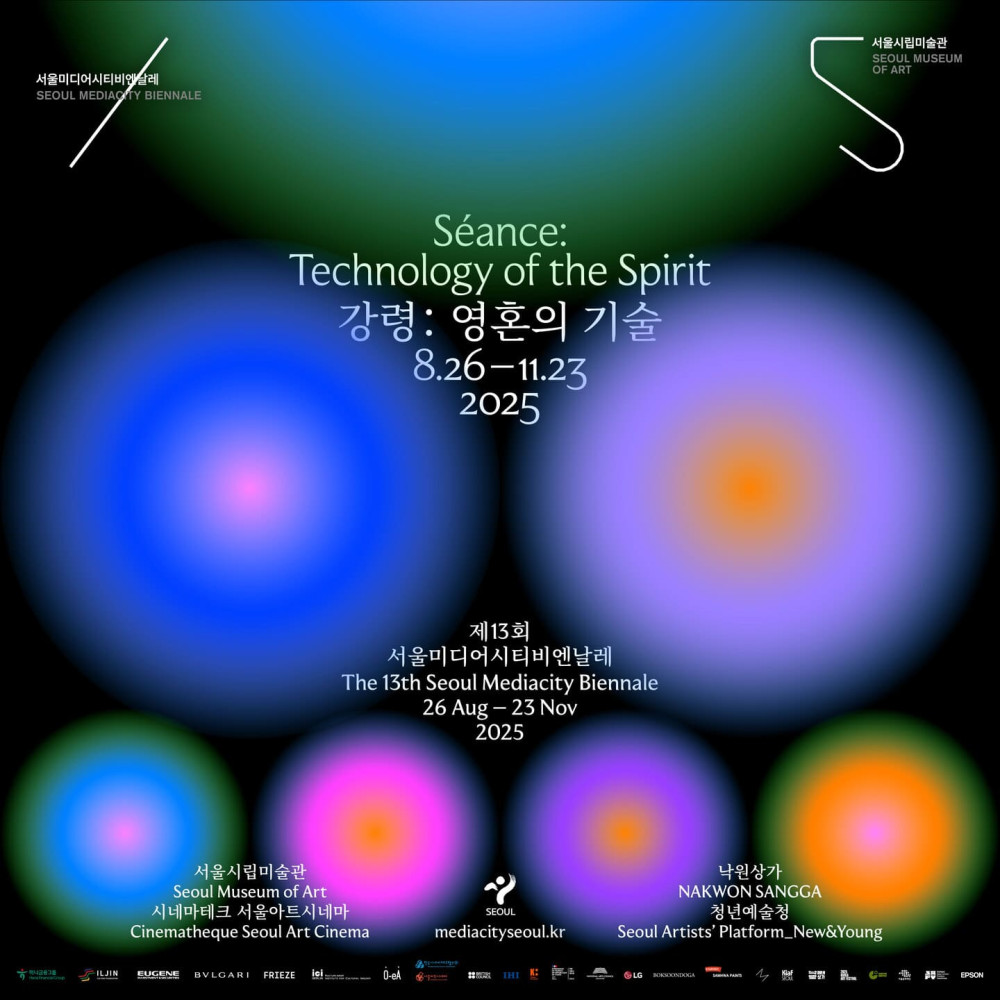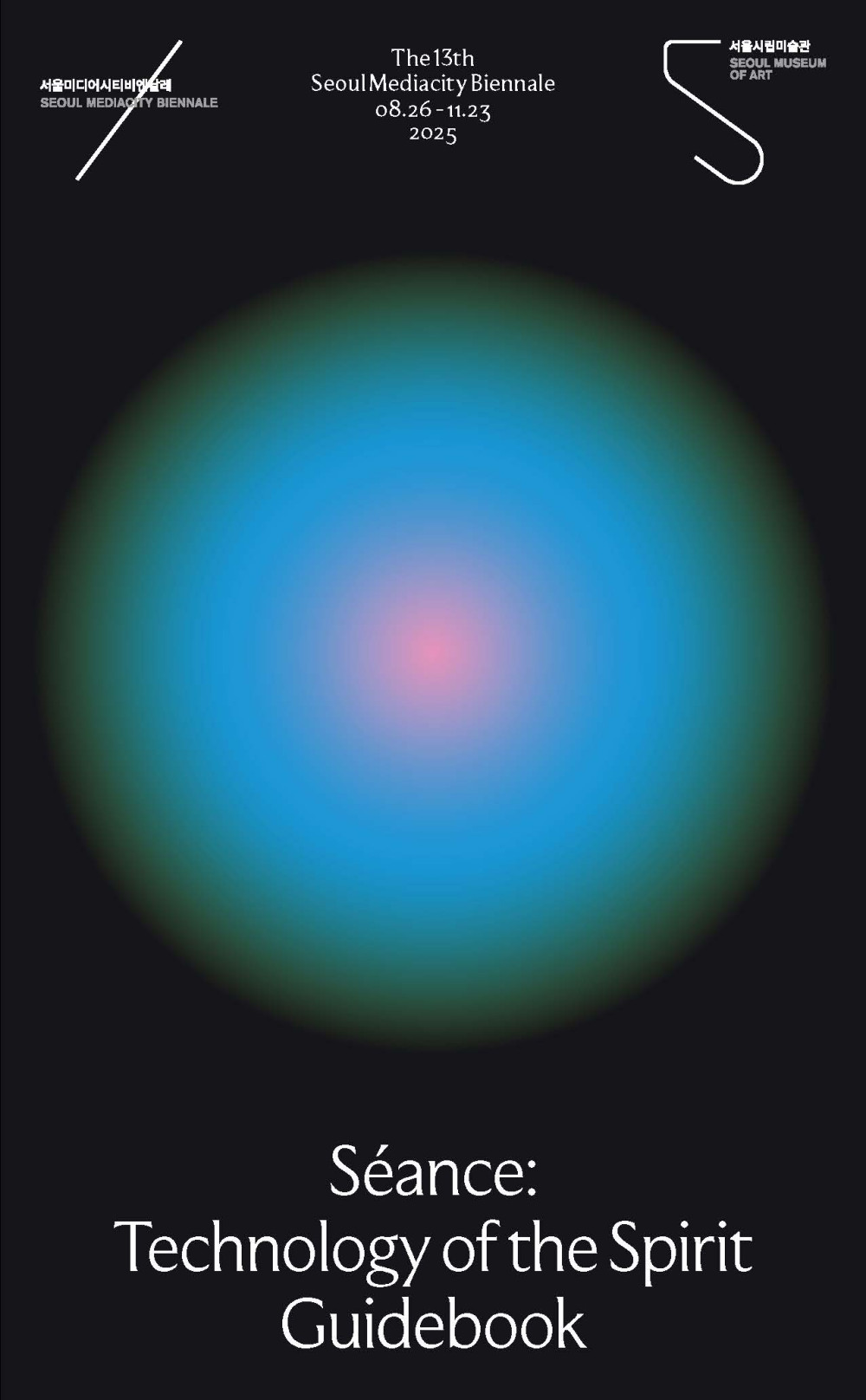
Jane Jin Kaisen’s work considers wider political histories through the experience of displaced individuals and communities. Marine environments function in her videos and performances as sites of—and metaphors for—the intermingling of cultures and the encounter of worlds. These coastlines and crossing points carry histories of conflict, migration, and spiritual practice.
Both films exhibited here are set in an abandoned holiday resort on Jeju Island. In Sorrow Waters This Land, we see rain fall as a typhoon that batters the crumbling concrete shell of the hotel. But as the storm recedes, the birds and plants that have overtaken this ruined landscape begin to emerge from the floodwaters. What will survive the devastation?
Dokkaebi are shapeshifting nature spirits often invoked in shamanic rituals on Jeju Island. In the eponymous film they dance through the wreckage of the hotel, which has been reclaimed by nature and is wrapped in climbing vines and flourishing plants. Then the rain comes…
Seven of these shapeshifting, elemental dancers feature in the performance Sway. What have they come to tell us? Have they come to our aid or to play tricks on us? Or perhaps they are here to remind us to attend to other ways of sensing, knowing, and relating to each other… They dissipate into the rain as swiftly as they emerged from it.


